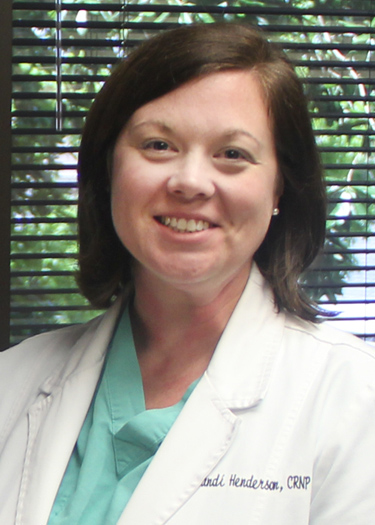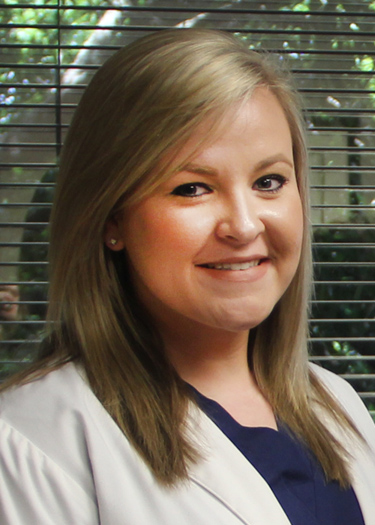.jpg)
Better Together with the Office of Beverly Jordan, M.D.
 |
| Beverly Jordan, MD |
Teamwork is defined as work done by several associates with each person doing a part but each person contributing to the efficiency of the whole. Dr. Beverly Jordan of Enterprise said she has never practiced medicine, not even in medical school when it wasn’t rooted in the basis of teamwork.
“For me, medicine has always been as part of a team,” Dr. Jordan explained. “When you go to medical school and work in that training environment, you’re part of a team…you’re never alone. You work together with your fellow students, and you have a team of interns, residents and attendings who work with you. That’s when it’s fully emphasized in our training that you’re never alone. Medicine is this huge breadth of knowledge that is rapidly changing. One person can never be expected to know it all, and to think that you do is a very dangerous thing. To not recognize that you don’t know something and to not be willing to ask for help is dangerous. That’s how you hurt people.”
For most of the country, experts have said that a physician shortage is fast-approaching, but for most of Alabama, it’s already here and getting worse each year. According to the Association of American Medical Colleges, the U.S. is projected to have a shortfall of up to 121,300 physicians by the year 2030, owing to population growth and the increased needs of a rising percentage of seniors who will require more doctors.
With more and more patients crowding physicians’ waiting rooms, one of the best and most logical solutions to continue providing quality medical care is with a physician-led team-based care model. While the needs of each medical practice in every community differ, the physician-led team-based care model is an effective way to deliver medical care to patients using the complementary skill sets of all health care professionals working together with the patient’s health care needs as the common goal – and the physician as the team leader.
This model of health care is nothing new, but in a way, it’s making a comeback out of necessity.
“Even from the very beginning, we were taught the team-based care model,” Dr. Jordan said. Dr. Jordan, who practices family and sports medicine, is a graduate of the University of Alabama School of Medicine, so working with sports medicine is near to her heart. “Everything was team oriented for our sports teams that we were taking care of. So we were a multidisciplinary team that took care of our athletes at Alabama. We had the athletic trainers, the medical doctor, surgeons, massage therapists and psychologists.”
Adopting the team-based model into her medical practice was only natural. As a mentor to nurses attending school to become Certified Registered Nurse Practitioners, Dr. Jordan created two positions in her practice for Candi Henderson, CRNP, and Corey Mercer, CRNP, who each have extensive nursing backgrounds before pursuing their CRNP designations.
 |
| Candi Henderson, CRNP |
“In a rural community, we have way more patients than we have physicians to take care of our patients. In our practices, like many other rural practices that I’ve trained in and grew up knowing, we have a hard time with the word ‘no,’” Dr. Jordan laughed. “We see everybody that wants to be seen that day, so you just take your time and really kind of settle in and do the best you can. Adding Candi and Corey allowed me to be more efficient in taking care of the patients that I have, and my patients don’t have to wait quite as long because they have someone else who can see them and get things moving in the right direction.”
Dr. Jordan said that the physician-led team-based model works much like when she was a medical student and an intern where “you saw the patient first, came out and presented the patient to the person up the chain of command was to you, and then everyone went back in and saw the patient together to formulate a plan. That’s exactly what we do here. The nurse practitioners see the patient, formulate a plan, tell me what they saw and what they think the plan is going to be, and then we go back in together. I tweak the plan if I find some things I want to do differently. Now, there’s a lot less tweaking.”
 |
| Corey Mercer, CRNP |
Corey agreed with Dr. Jordan that communication among the staff is key and added that no one in the practice is ever left to stand alone when it comes to the health of a patient.
“It is crucial for health care to be safe, effective, patient-centered, timely, efficient and equitable. Team-based health care makes this possible. Our team is able to function well together because we work and communicate as one entity to meet the needs of every patient. Just like a sports team, not one player or coach can be successful alone. There is no ‘I’ in team. From our physicians to our front desk staff and everyone in between, our team strives to work together to meet every patient’s needs,” Corey said.
Dr. Jordan added that Corey and Candi have become excellent educational resources for the patients and have developed trusting relationships with them. It’s a relationship that’s felt throughout the practice.
“There is no doubt that having Corey and Candi on my team has made a significant improvement in my work-life balance. There’s somebody else you can lean on. I can leave the office and go to my kids’ school event and still have 100 percent confidence that the two people left behind to take care of my patients are going to take great care of my patients,” Dr. Jordan said. “I don't think there’s a day I’m out of the office that we don’t communicate about something.”